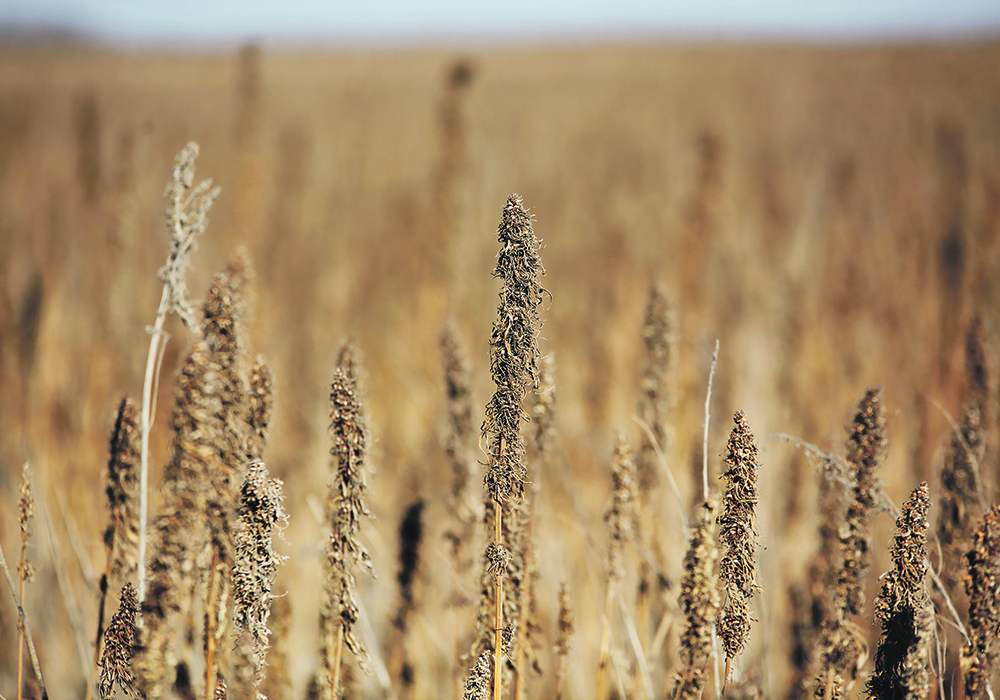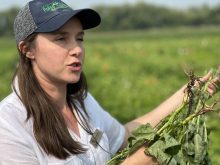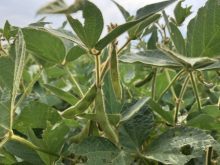A new generation of processing plants has entered the field with an eye on tapping the potential of the fibre market
It’s been nearly 25 years since Canada legalized commercial hemp production after being prohibited in 1938. Today, 50,000 acres are seeded, primarily in the western provinces.
Hemp proponents say Canada is well positioned to be a primary source of raw material and a leader in processing hemp into everything from cooking oil to body panels in the automotive industry.
Earlier this year, nearly $1 million in Canadian Agricultural Partnership grants were awarded to two Alberta-based processors for development of processing facilities. The province is fast becoming a hub for not only crop production but finished products.
Read Also

Fusarium head blight mycotoxin detector in the works
A PhD student at the University of Saskatchewan has been working on developing a method of detecting fusarium damaged kernels to ease the struggles of producers, agronomists and industry.
Dan Madlung, chief executive officer of BioComposites Group, said Canada has an opportunity to participate in the nascent international hemp production and processing sector.
“The industry in Canada has always been about protein or seed. We’re world leaders in producing the seed crop,” he said.
But it’s the fibre side of the crop that can be used for textiles, building materials and a replacement for fibreglass for automotive panelling where the potential for growth knows few bounds, he added.
Hemp straw, once relegated to a byproduct in favour of seed and CBD oil, is now considered in Canada as a potential cash crop of its own as the country looks to catch up with Asia and Europe in fibre processing
“The fibre side is probably the last one to take off in Canada and in North America,” said Madlung.
The capacity of decortication — the process of separating hurd and fibre from hemp — in the country has seen several processors come and go, which has resulted in an uneven supply in the past but Madlung said that issue is being addressed.
The Canadian Rockies Hemp Corp., based in Bruderheim, Alta., is online with IND Hemp in Montana also providing stability for decortication. INCA and Blue Sky Hemp Ventures, recipients of Canadian Agricultural Partnership grants, will see that capacity increase further.
“What’s happening with farmers now is that they’ve got more places to sell their straw,” said Madlung. “There is a lot more straw being bought than five years ago and that’s increasing every year.”
But growing hemp for fibre can be extremely tough on harvesting equipment, which Madlung said is why some processors will use their own equipment to harvest the crop for farmers.
There is also the option of growing hemp for both seed and fibre.
“A lot of the seed farmers are switching to dual varieties. You’re growing a little taller stem but you can still combine the top off and you get more recovery of the fibre per acre so your revenue increases,” he said.
While the Canadian hemp fibre side is growing, Manny Deol, executive director of the Alberta Hemp Alliance, said the potential for increasing cooking oil production “will really move this industry’s acres forward.”
Canada is a net exporter of hemp cooking oil, primarily to Asia, though there is room to grow in the domestic market, he said.
The investments taking place in Alberta for new processing should interest farmers looking for a new crop in their rotation because hemp has a wider variety of uses and also “sequesters more carbon than any other plant and it can grow in three months.
“Hemp has been held back because of cannabis laws and it’s really taken off now here and the U.S. because you can make 30,000 products from hemp.”
Deol predicts Alberta’s hemp acreage could grow to half a million from the current 30,000 within 10 to 15 years if processing projects come to fruition.
There are still some roadblocks to reach that potential, added Deol, citing some reluctance from the investment community.
“Our government is very supportive because they want to see hemp growth and they are supporting these companies financially,” he said. “There is still an issue with fund managers. The stigma is still there and they aren’t that liberal like they should be for industrial hemp.”
Madlung said there are benefits in adding hemp to rotations because it is a good carbon sequesterer and it is drought tolerant with deep roots adding nutrients to the soil.
The reputation of the hemp sector is improving, said Madlung, but he said it’s important growers ensure they have a solid contract with a processor if they are considering going with the crop. It’s also important to understand some of the difficulties in harvesting hemp.
But the industry is willing to share its growing secrets, “and I think it’s here to stay,” said Madlung.
















